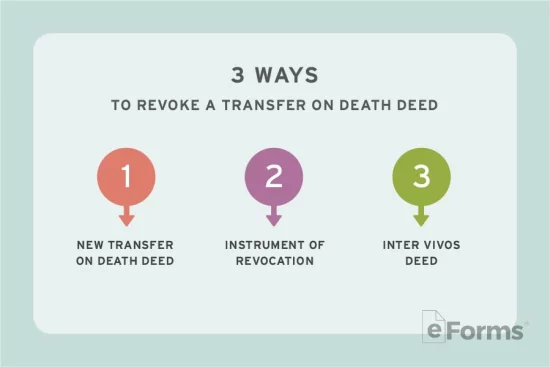Updated April 12, 2024
A Virginia transfer on death deed allows a person to transfer ownership of their real property to a designated beneficiary, becoming effective at the time of their death. Using a transfer on death deed allows the transferor and beneficiary to skip the probate process, which can be drawn out and costly. Once recorded, it can be revoked at any time while the transferor is still alive.
Table of Contents |
Requirements
- Notary: Required.[1]
- Witnesses: Not required
- Recording: Before the transferor’s death in the land records of the clerk’s office of the circuit court in the jurisdiction where the property is located.[2]
Legal Description
This is a required section in a transfer on death deed. A legal description of real property provides its exact location and specs to help identify it. It typically follows the Public Land Survey System (PLSS), which divides land into townships, ranges, and sections.
A legal description of real property can be found on the property deed or by accessing the land records of the clerk’s office of the circuit court in the property’s jurisdiction.
Example
“All that parcel of land situated in the County of Norfolk, State of Virginia, described as Lot 21, Block D, Section 4 of the Bayview Subdivision, as shown on plat recorded in Plat Book 13, Page 45, among the land records of Norfolk County. Said lot having a frontage of 85 feet on Willow Court and a depth of 145 feet, containing 11,423 square feet.”
Revocation
A transfer on death deed can be revoked by using one of the following documents:[3]
- A transfer on death deed that revokes the original TOD or part of the transfer on death deed expressly
- A transfer on death deed that names a designated beneficiary that is inconsistent with the designated beneficiary in a prior transfer on death deed
- An instrument of revocation that expressly revokes the transfer on death deed or part of the transfer on death deed
- An inter vivos deed that expressly revokes the transfer on death deed or part of the transfer on death deed
For the revocation to be effective, it must be acknowledged and recorded prior to the transferor’s death.
How to Record
To record a transfer on death deed, complete and acknowledge the form and take it to the land records division of the clerk’s office of the circuit court in the jurisdiction where the property is located. Follow the instructions provided by the clerk to have the deed recorded in the official land records. Filing fees vary by county.



